Dry, brittle hair can feel like a losing battle especially when you’ve tried all the “miracle” products and still find your strands dull, frizzy, or impossible to style. We’ve all had those days where no amount of leave-in conditioner, serum, or heat styling seems to help. The truth is, dryness is often the result of habits we don’t even realize are harming our hair.
But here’s the good news: dry hair doesn’t happen overnight, and it’s not a life sentence. With the right care, you can restore moisture, softness, and shine — and prevent further damage. The key isn’t chasing quick fixes. It’s building a daily haircare routine that supports hydration from the inside out.

In this guide, we’re going beyond surface solutions. We’ll explore the real reasons your hair might feel dry from environmental stressors and heat tools to the way you wash your hair or what you eat. We’ll also share smart, science-backed strategies to replenish moisture, strengthen your strands, and bring your hair back to life.
Whether your hair is naturally dry or recently damaged, straight or curly, color-treated or virgin this guide is your blueprint to long-term hydration. And most importantly, it will help you stop guessing and start nourishing your hair with intention.
Because when you understand the root causes, you can finally say goodbye to brittle ends, frizz, and dullness and hello to healthier, more radiant hair.
What Causes Dry Hair?
Your hair’s outermost layer, called the cuticle, acts like tiny shingles on a roof. When these lay flat, they lock in moisture and give your hair that smooth, glossy feel. But when the cuticle is raised or damaged, moisture escapes. That’s when you start noticing rough texture, tangles, split ends, and breakage.
So, what causes the cuticle to lift or break down? Dry hair is often a symptom of one or more of the following factors:
- Heat damage: Daily use of hot tools can fry your hair, breaking down its internal protein bonds.
- Chemical processing: Bleaching, coloring, relaxing, and perming all weaken the hair structure.
- Environmental aggressors: Sun, wind, cold air, and even air pollution strip natural oils from your hair.
- Improper haircare routines: Overwashing, skipping conditioner, or using drying products makes matters worse.
- Lack of hydration from within: Poor nutrition, dehydration, and certain health conditions can show up in your strands.
- Aging: As we get older, our scalps produce less oil — especially in women post-40 — which naturally leads to drier hair.
Understanding the “why” behind your dryness is the first step. Once you pinpoint the triggers in your own routine or environment, you can begin to reverse the damage with daily, consistent care.
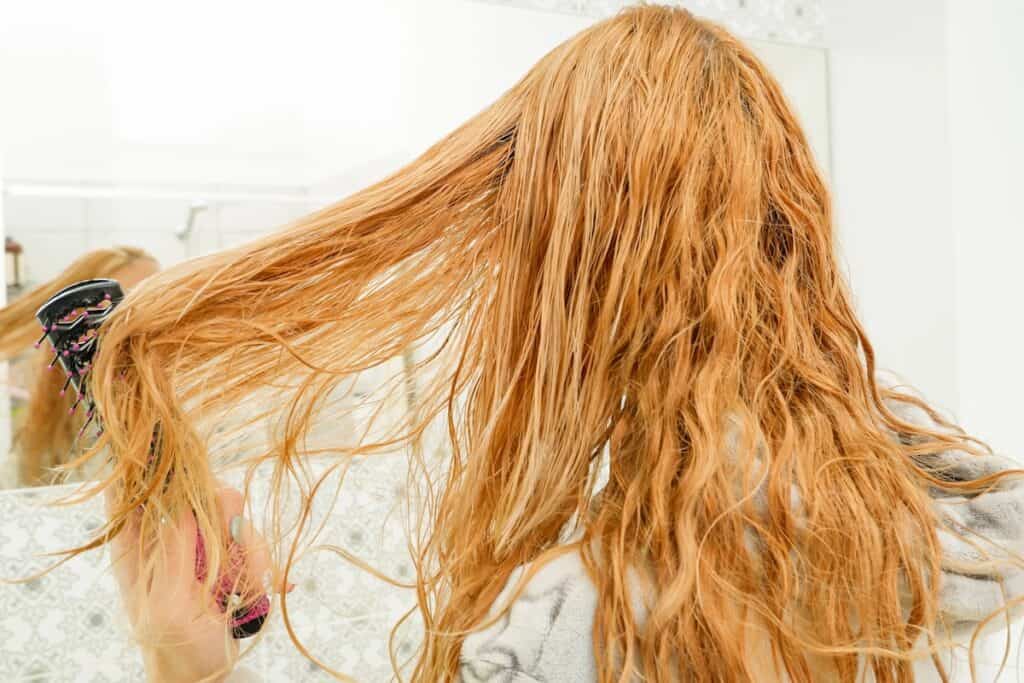
1. Choose the Right Shampoo and Conditioner
One of the most important and most overlooked ways to combat dry hair is to choose your shampoo and conditioner wisely. Not all formulas are created equal, and many products labeled as “cleansing” or “volumizing” actually contain harsh surfactants that strip your hair’s natural oils.
If your shampoo leaves your hair squeaky clean, it may be doing more harm than good.
Look for shampoos that are sulfate-free, pH-balanced, and labeled as “moisturizing,” “hydrating,” or “nourishing.” These formulations gently cleanse without removing your scalp’s natural protective oils.
As for conditioner, ingredients matter. Reach for those that contain:
- Natural oils: Like argan, jojoba, or avocado
- Humectants: Such as glycerin or aloe vera, which draw moisture into the hair
- Proteins: Like keratin or hydrolyzed wheat protein to repair and fortify strands
If your hair is both dry and chemically treated, using a bond-repair conditioner (like Olaplex or K18) can dramatically improve softness and strength over time.
Consistency is key. Using a hydrating shampoo and conditioner every wash day will do more for your hair than a monthly mask.
2. Style with Heat but Don’t Overdo It
Heat styling gives quick results but over time, it also depletes moisture and weakens the hair’s natural protein structure. The good news? You don’t have to give up your favorite tools — you just have to use them more mindfully.
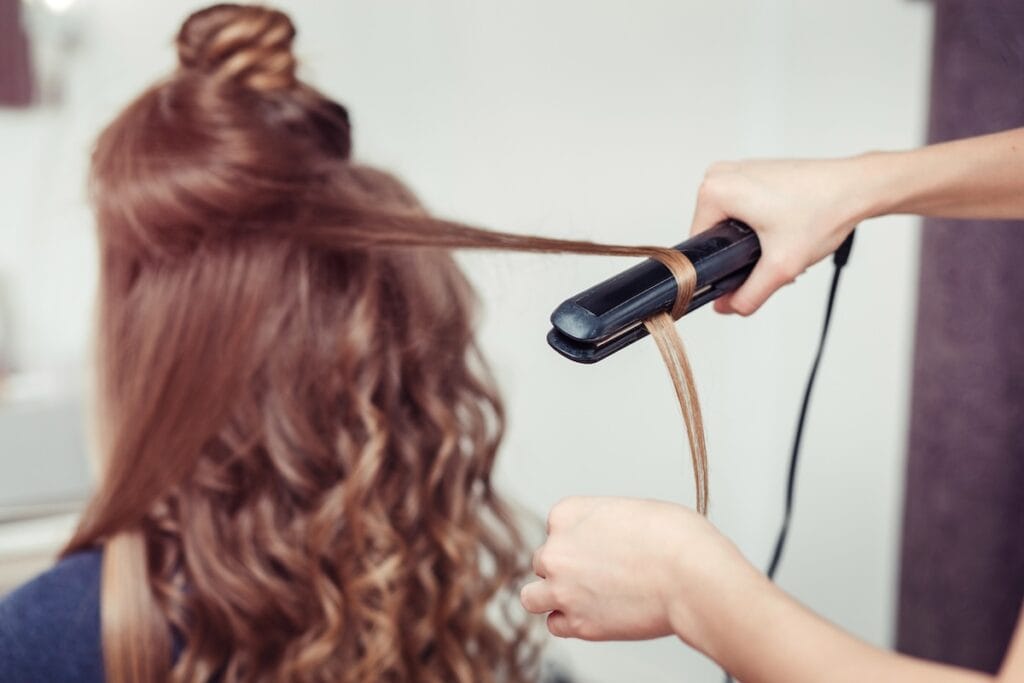
Always apply a heat protectant spray or serum before using hot tools. These act like sunscreen for your hair, creating a barrier that reduces moisture loss and protein breakdown.
Better heat habits to adopt:
- Let your hair air-dry at least 50% before blow-drying
- Use ceramic or tourmaline tools with adjustable temperature settings
- Keep hot tools below 350°F for fine or color-treated hair
- Limit hot styling to 2–3 times per week, max
Remember: Your hair doesn’t have to be scorched to look styled. Lower temps, gentler tools, and protective products go a long way.
3. Protect Your Hair from the Elements
Even if you’re taking great care of your hair indoors, the outdoors can undo all that progress. Sun exposure, harsh winds, dry air, and even pollution are common environmental stressors that quietly dry out your hair over time.
Just like your skin needs SPF, your hair needs protection too.
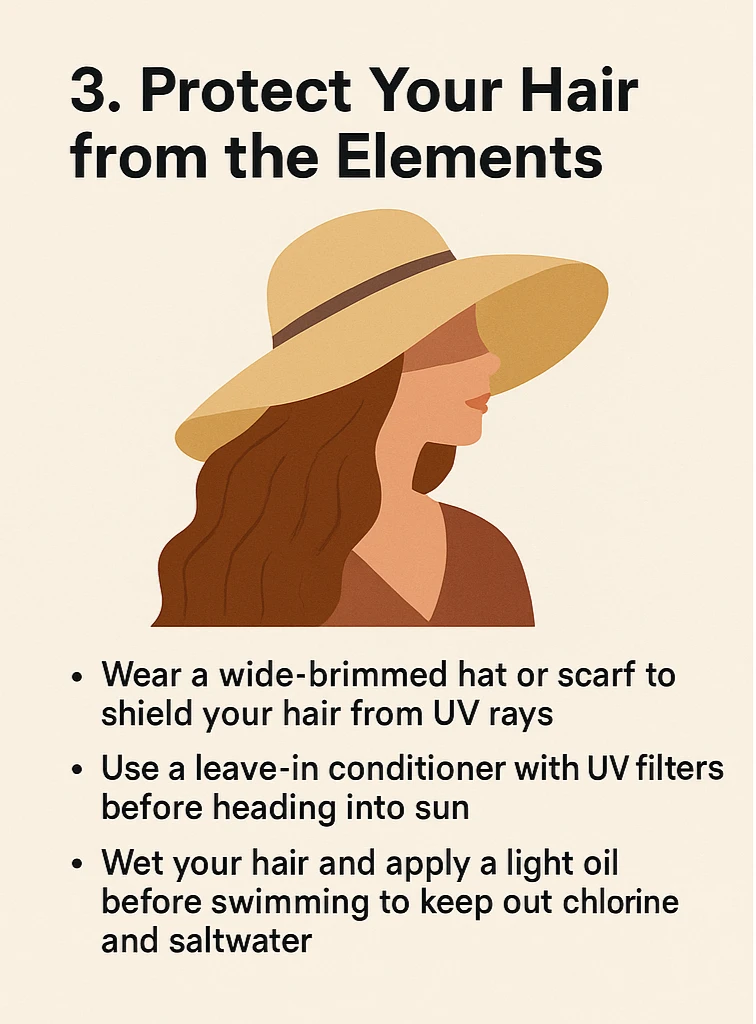
Here’s how to guard your strands when you’re outside:
- Wear a wide-brimmed hat or scarf to shield your hair from UV rays.
- Use a leave-in conditioner with UV filters before heading into the sun.
- Wet your hair and apply a light oil before swimming to keep out chlorine and saltwater.
- After swimming, rinse your hair immediately and follow with a rich conditioner.
Think of your hair as fabric — the more you expose it to sun, wind, and water, the faster it wears out. Shield it like you would your favorite clothing.
4. Add Moisture with Natural Oils
When your hair feels dry, dull, or stiff, oils can bring it back to life. These plant-based powerhouses not only soften your hair but also help lock in hydration by sealing the cuticle layer. Whether you have curly, straight, or color-treated hair, there’s an oil that works for you.
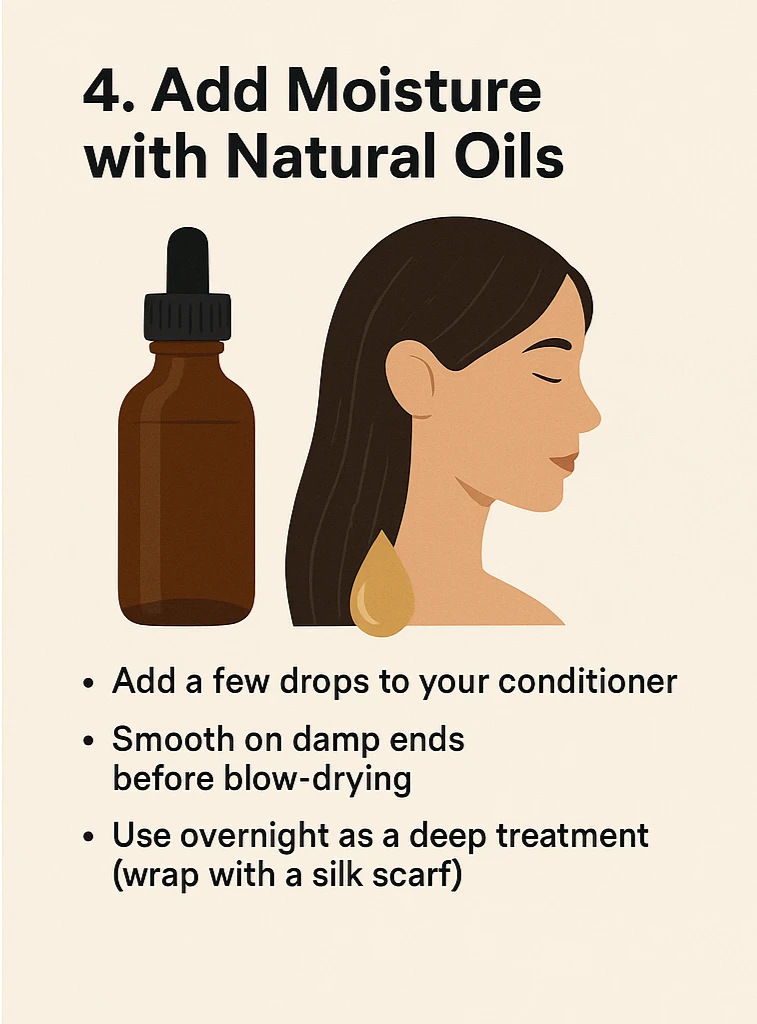
Top oils for dry hair:
- Jojoba Oil: Closest to your scalp’s natural sebum, perfect for balanced hydration.
- Argan Oil: Loaded with Vitamin E and essential fatty acids for shine and softness.
- Coconut Oil: Great as a pre-wash treatment, especially for porous or curly hair.
- Rosemary or Peppermint Oil: Stimulate scalp health when added to your carrier oils.
Ways to use natural oils:
- Add a few drops to your conditioner.
- Smooth on damp ends before blow-drying.
- Use overnight as a deep treatment (wrap with a silk scarf).
Oil isn’t just a finishing product — it’s a deeply nourishing step in a truly moisturizing routine.
5. Rethink Your Washing Technique
How you wash your hair matters just as much as what you wash it with. Even if you’re using the best shampoo in the world, overwashing or washing the wrong way can strip your strands of their natural moisture.

Better wash-day habits for dry hair:
- Wash less often: 2–3 times per week is enough for most hair types
- Use lukewarm water: Hot water can lift the cuticle and dry out your hair
- Focus shampoo on your scalp: Let the suds rinse through your ends instead of scrubbing them
- Be gentle: Don’t pile your hair on top of your head or twist it aggressively
Swap your regular towel for a microfiber towel or an old cotton t-shirt to blot your hair dry instead of rubbing. These small changes reduce friction, frizz, and breakage.
Healthy hair starts in the shower so slow down and give your strands the gentle care they need.
6. Deep Condition Weekly (Or More!)
Dry hair craves deep, lasting moisture — and deep conditioning masks deliver exactly that. These ultra-rich treatments penetrate the hair shaft to repair, restore, and soften from within.
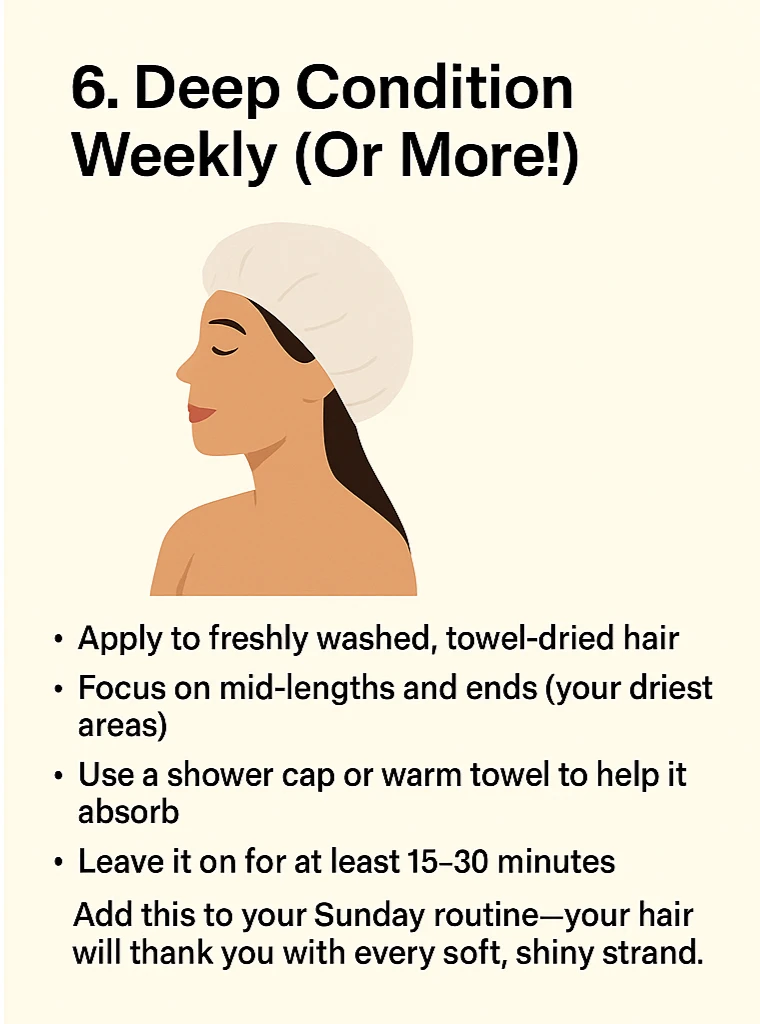
How to get the most from your mask:
- Apply to freshly washed, towel-dried hair
- Focus on mid-lengths and ends (your driest areas)
- Use a shower cap or warm towel to help it absorb
- Leave it on for at least 15–30 minutes
Ingredients to look for:
- Shea butter
- Coconut oil
- Glycerin
- Ceramides
- Aloe vera
Add this to your Sunday routine — your hair will thank you with every soft, shiny strand.
7. Don’t Skip Regular Trims
We often think moisturizing products alone will fix dryness — but sometimes, the best thing you can do is remove what’s already damaged. Split ends can travel up the hair shaft, causing further breakage and leaving your strands looking frizzy and unhealthy.
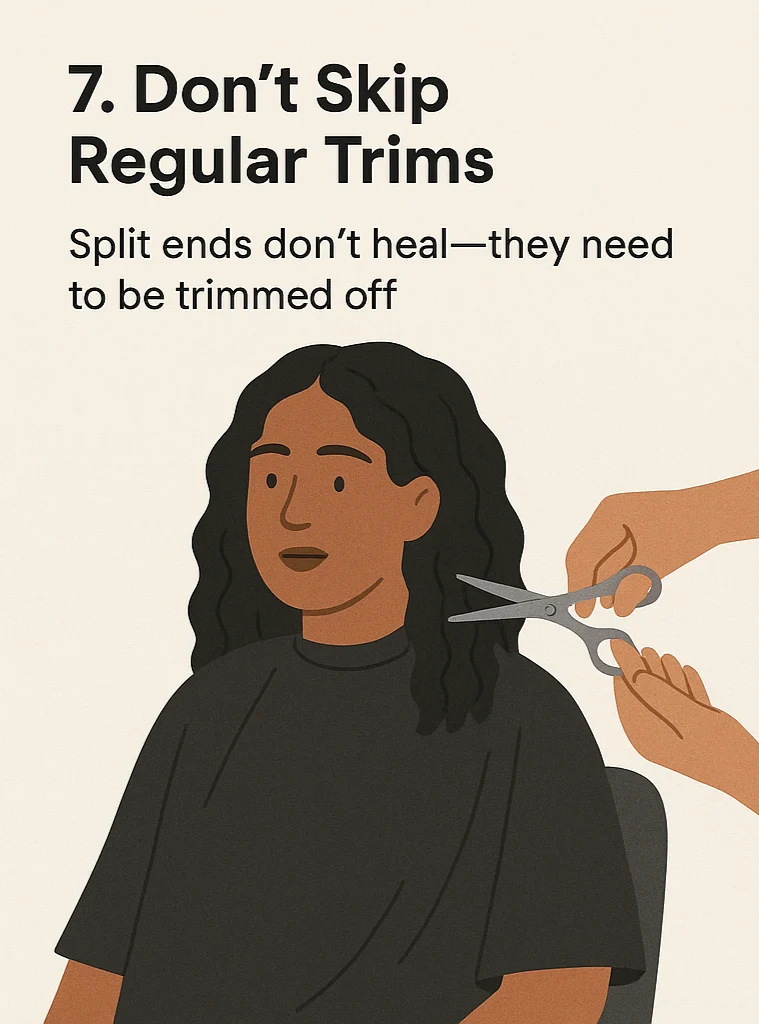
Why trims matter:
- Split ends don’t heal — they need to be trimmed off
- Regular trims prevent breakage from traveling upward
- Your hair will look thicker, smoother, and healthier instantly
You don’t need to lose length. A micro-trim every 6–8 weeks can keep your hair strong and reduce the chance of future dryness.
Think of trims as routine maintenance — like pruning a plant so it can grow stronger.
8. Be Gentle When You Brush
Brushing may seem simple, but it’s one of the easiest ways to cause unnecessary damage — especially if your hair is dry, brittle, or curly. Using the wrong tools or rushing through tangles can lead to breakage and moisture loss.
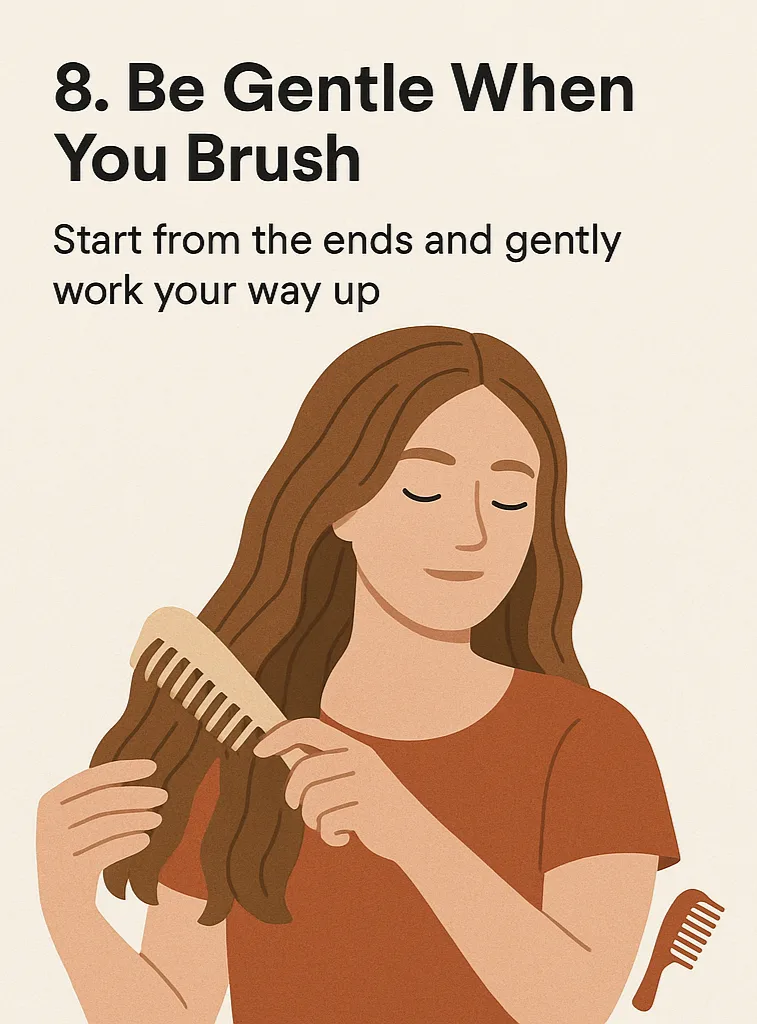
Brushing tips for healthier hair:
- Start from the ends and gently work your way up
- Use a wide-tooth comb or a detangling brush for wet hair
- On dry hair, use a boar bristle brush to distribute scalp oils down the shaft
- Avoid brushing too frequently — it can cause friction and frizz
Pro tip: Always detangle before shampooing to minimize knotting while wet, and never brush soaking wet hair unless you’re using a tool designed for it.
Gentle handling protects your hair’s cuticle — which means less frizz, fewer flyaways, and more natural shine.
9. Consider Professional Salon Treatments
If at-home care isn’t giving you the softness or shine you’re after, a professional touch can make all the difference. Salon treatments are designed to deeply penetrate the hair shaft, often using heat or specialized ingredients to restore moisture and repair internal damage.
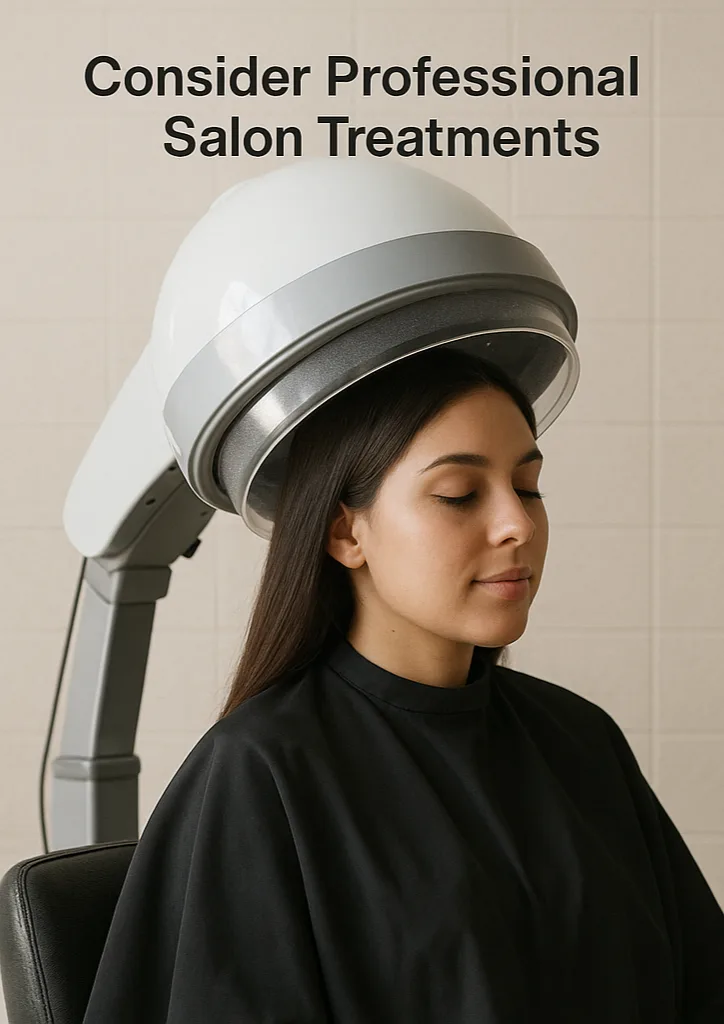
Salon treatments worth exploring:
- Deep conditioning steam treatments: Use heat to open the cuticle and push moisture in
- Keratin treatments: Smooth the hair and reduce frizz without harsh chemicals
- Protein rebuilders: Fill in gaps in damaged strands, especially after bleaching or chemical processing
- Bond-repair systems: Like Olaplex, K18, or Redken Acidic Bonding — these rebuild broken bonds inside the hair
Talk to your stylist about your hair’s texture, condition, and history to get the most targeted treatment possible. And always follow up with a proper at-home routine to make results last.
Sometimes, a little professional support is the reset your hair truly needs.
10. Nourish Your Hair From the Inside Out
Great hair starts with great health. Your strands are made of keratin — a protein — which means your hair needs the right nutrients to grow strong, shiny, and resilient. If your diet is lacking, your hair will often be the first place it shows.
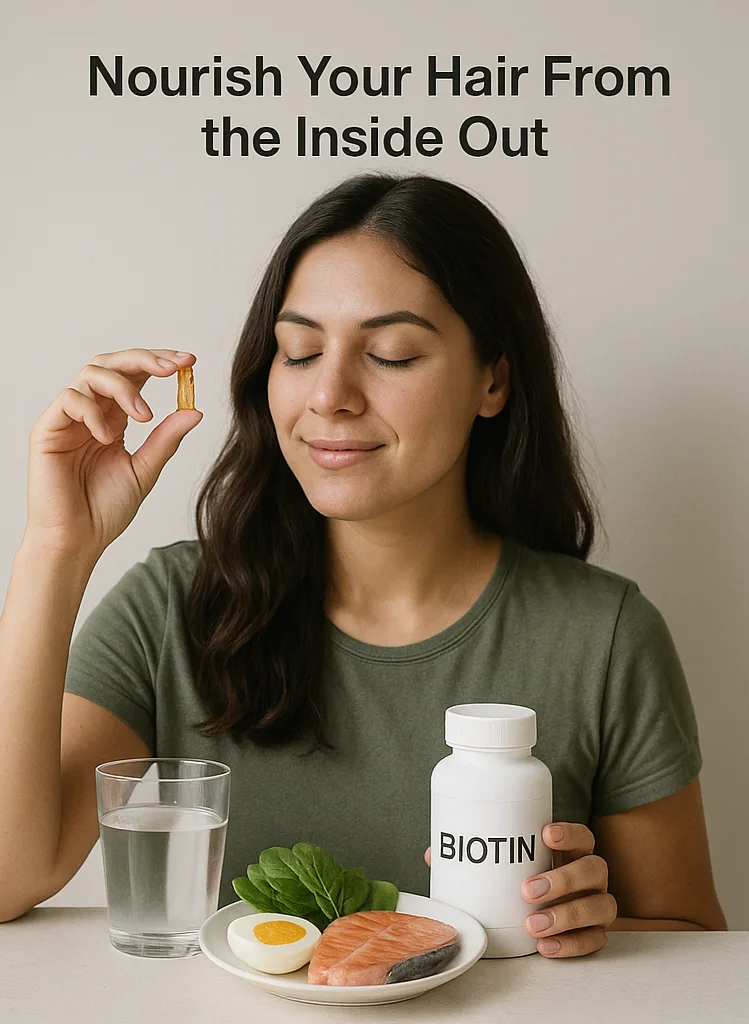
Essential nutrients for hair health:
- Protein: The building block of hair — found in eggs, fish, legumes, and lean meats
- Biotin (Vitamin B7): Strengthens and supports growth
- Iron: Carries oxygen to your follicles
- Omega-3 fatty acids: Add shine and elasticity
- Vitamin A, C, D, and E: Support scalp health and follicle function
Consider taking a high-quality multivitamin or hair supplement (with biotin, collagen, or silica) if your diet isn’t consistent. And don’t forget water — dehydration is a hidden cause of brittle, dry hair.
Feed your body what it needs, and your hair will show its gratitude — from the root to the very last strand.
Final Thoughts: Your Path to Healthier, Hydrated Hair
Dry hair isn’t a life sentence — it’s a signal. A sign that your hair needs more attention, better habits, and deeper care. Whether you’re just beginning your healthy hair journey or trying to repair years of damage, the good news is: it’s never too late to turn things around.
Each step you take — from using gentler products to embracing deep conditioning, trimming regularly, and protecting your hair from the elements — moves you closer to smoother, softer, and stronger strands.
And remember: it’s not just about products. It’s about patience, consistency, and knowing that even small improvements in your daily routine can lead to major changes over time.
Your hair deserves care that feels as good as it looks. So give it the love it’s been waiting for.
Here’s to saying goodbye to dryness — and hello to hair that actually feels alive again.
Frequently Asked Questions About Dry Hair
How do I know if my hair is dry or just damaged?
Dry hair often feels rough, brittle, and lacks shine, while damaged hair typically has visible breakage, split ends, or may feel stretchy and weak when wet. Many people have both — dryness can lead to damage if not addressed.
Can I repair dry hair without cutting it?
You can absolutely improve the condition of dry hair with moisture-rich products, deep conditioning masks, and bond-repair treatments. However, if your ends are split or severely damaged, a small trim is still the best way to prevent further breakage.
How often should I deep condition dry hair?
Once a week is ideal for most people. If your hair is extremely dry or curly, you may benefit from deep conditioning twice a week. Always follow with a leave-in conditioner or oil to seal in moisture.
What ingredients should I avoid in shampoo if I have dry hair?
Avoid harsh sulfates (like SLS or SLES), alcohols (like isopropyl alcohol), and synthetic fragrances or dyes. These can strip natural oils and worsen dryness. Look for sulfate-free, hydrating formulas instead.
Do natural oils really work on dry hair?
Yes! Natural oils like argan, coconut, and jojoba can soften dry strands, reduce frizz, and help seal in moisture. They’re most effective when used after a hydrating product or on damp hair.
How long does it take to fix dry hair?
It depends on the severity of dryness and your routine. With consistent care — including proper washing, deep conditioning, and heat protection — you can start seeing improvement in as little as 2–4 weeks.


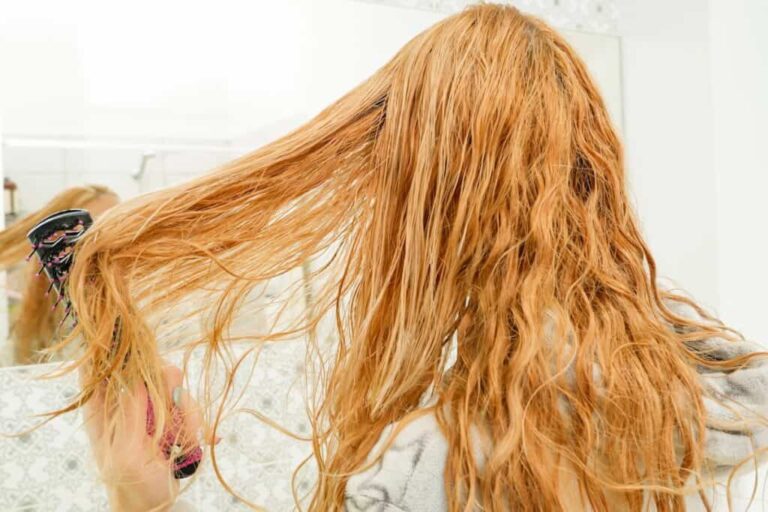
3 Comments